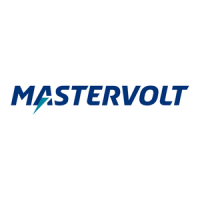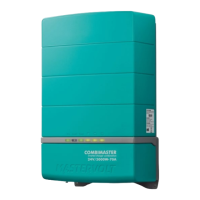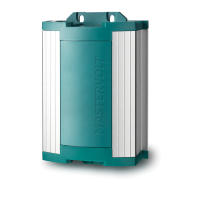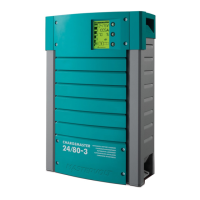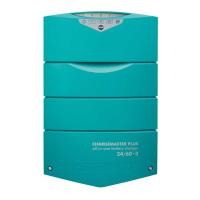6 OPERATION
6.1 Switching On / Charge only
The main switch on the bottom of the CombiMaster has two positions:
• Inverter and charger on (I)
• Charge only, inverter off ().
Note: When the main switch is in this position (), it consumes 1mA DC power when not connected to AC. Switching off
the inverter remotely, increases the DC power consumption. If it is necessary to put the CombiMaster out of operation, for
winter storage for example, it is strongly recommended to switch the inverter off by the main switch.
6.2 Status LEDs
Figure 5: status LEDs
Off:
- : No AC input
- : Inverter off
- : Charger off
Green on:
- : AC input OK
- : Inverter on
- : Charger on
- : Charger in bulk phase
- : Charger in absorption phase
- : Charger in float phase
- +: AC IN support mode
Green blinking:
- : Inverter power save mode active
Red on:
- : AC input out of range
- : battery voltage low warning/shutdown
- : battery voltage high causing shutdown
Red blinking:
˗ : AC output overload
˗ +: Shutdown by any other error, including
overtemperature of the CombiMaster
˗ : Battery temperature (sensor) error
Refer to the fault finding table on page 23 for possible causes of
problems.
6.3 3-step+ charge process
Battery charging is accomplished in three automatic stages: BULK, ABSORPTION and FLOAT. The first step is the BULK phase, in
which the output current of the charger is 100%, and the greater part of the capacity of the battery is rapidly charged. The
current charges the batteries and gradually the voltage rises to the BULK voltage. The duration of this phase depends on the
ratio of battery to charger capacity, and the battery state of charge.

